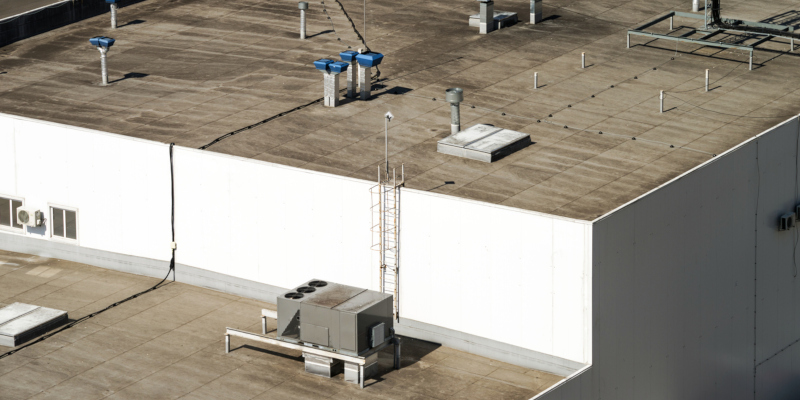
There are so many different types and materials for commercial roofing it can be hard to keep them all straight. Each style has distinct advantages and disadvantages that will determine whether or not it is right for your particular project. Here are some of the pros and cons of some different commercial roofing types.
- Flat Roofs: Flat roofs have the advantage of being cheap. They are simple to design, install, and then they are easy to work on due to their flat nature. One problem they may have is irrigation. When it rains the water may struggle to run off, and you may find spots on the roof where water pools. Snow can also be an issue, as large amounts of snow can build with nowhere to go.
- Pitched Roofs: A more exciting type of commercial roofing is pitched roofing. Pitched roofing is a little more complex than a traditional flat roof in that it has flat slopes for the rain, snow, or other debris to run off of. One con, however, is that it is not easy to work on. You cannot simply go walk out there and build new features to repair old ones.
- Low-Sloped Roofs: A combination of the above two roofing types is the low-sloped roof. It has a gentle slope that allows water to run off of it better but appears fairly flat which makes it easier to work on. One issue is that snow can still be a problem, and structural integrity needs to be strong to account for that.
There are more commercial roofing types than this, but these are the most common. It is important to be aware of the options if you ever want to build a commercial building with one of these types of roofs.
